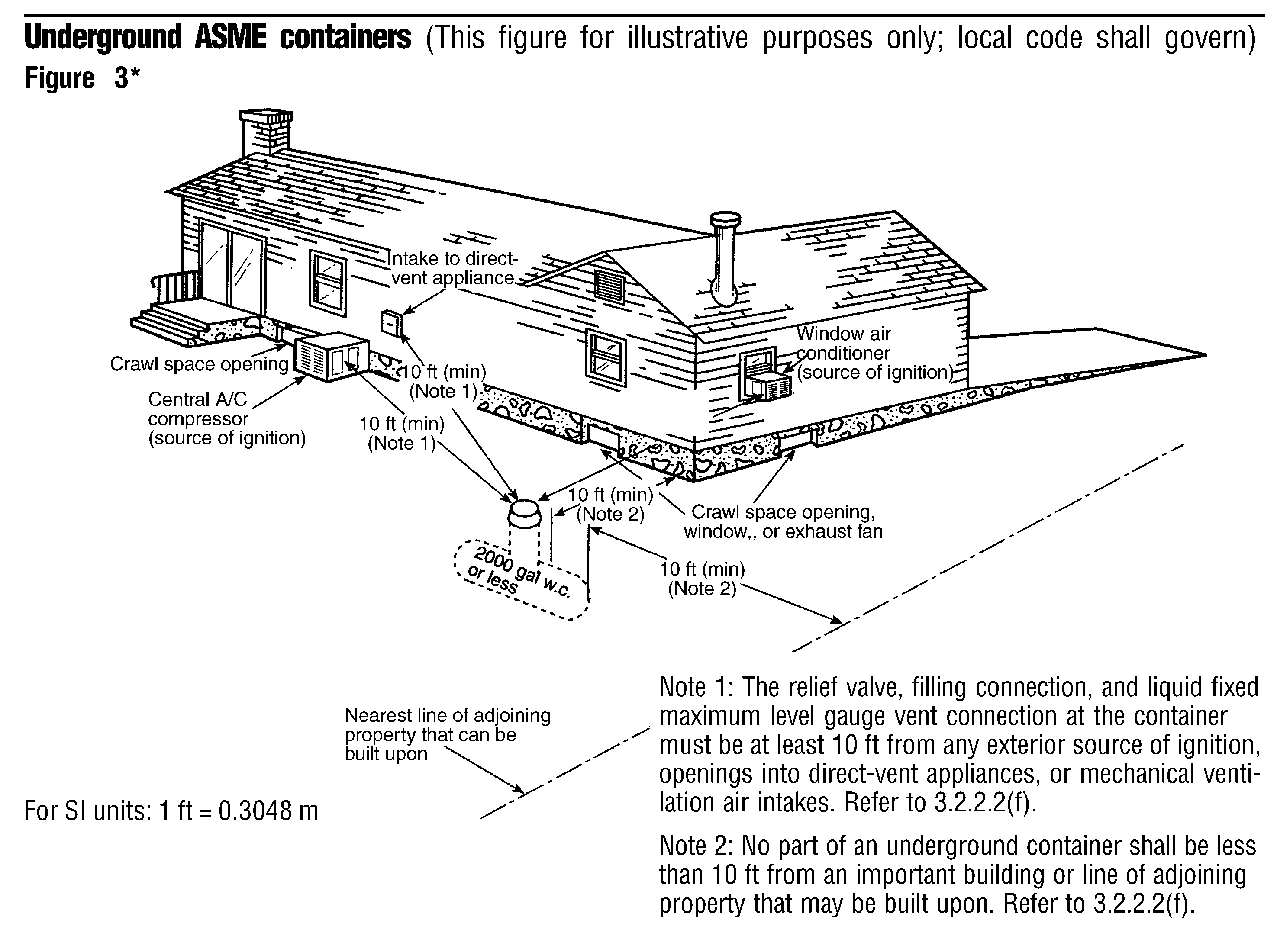





| Underground Propane Tank Protection - Because underground propane tanks are exposed to a completely different set of conditions and elements, certain precautionary and protective measures must be in place to prolong the service life of an underground propane tank. |
| Cathodic Protection - The earth a natural electric current that occurs in water and land alike. These electrical currents have an adverse affect on metal objects that are in the ground or in the water. This adverse affect is called electrolysis and will literally drill a small hole through a metal object. Underground propane tanks are subject to electrolysis and need to be protected to avoid the deteriorating effect that results. To protect a tank from electrolysis, an anode bag is attached by wire to the tank and placed in the hole with the tank before it is covered with backfill. This sacrificial anode bag absorbs the electrical currents in the earth that would have ordinarily targeted the tank resulting in damage to the container. In short, the sacrificial anode bag acts as a "decoy" for the damaging currents that can harm a tank in an underground environment. |
| Tank Coating and Backfill - The outer surface of an underground propane tank is in constant contact with an environment that can be extremely damaging. For this reason the outer surface of the container must have a protective coating and be covered with a material that will not be harmful to the shell of the underground propane tank. Although propane tanks designed for underground use are coated with a protective material at their point of manufacture, the container can be compromised during installation if the backfill is made up of rocks and/or abrasive materials. Underground tanks are designed to exist in harsh environments but if the backfill is made up of a material such as gravel (which can cut through the tanks protective coating), the anode bag may not adequately protect the tank from underground currents. For this reason, sand or firm earth free of rocks and abrasives should be used to cover an underground tank after installation. |
| Underground Tank Location - Underground propane tanks should be in a place where they are not going to be underneath any sort of vehicular traffic. For instance, a propane tank placed under where a driveway is to be installed is not a good idea and nor is it legal. The underground tank should be placed in a location where it is not going to be underneath anything other than dirt and earth. |
| Propane Tanks Can and Will Float - One of the most unnerving things any gas customer can see is their newly installed underground tank floating in the hole it was once buried in. &hnbspThe rule is this, if the water in the hole rises above the liquid propane level in the tank, the tank will float if installed improperly. There are precautions that can be taken prior to and during the underground tank installation process including placing wet cement in the hole just before the tank is lowered into place. This ensures that the tank feet are surrounded and covered and when the concrete cures, it will be harder for the tank to float out of the hole if water rises above the liquid propane level in the tank. Another option, recommended by FEMA, involves securing the tank in place with ground anchors and metal straps. |
